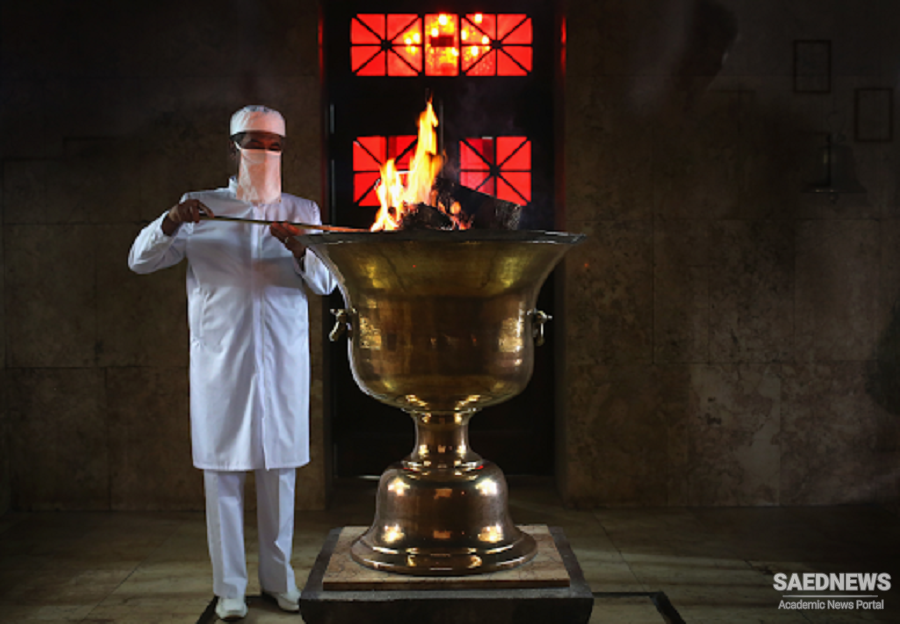In Zoroastrianism priests perform the religion’s highly prescribed rituals in consecrated temples at regular intervals throughout the day. These rituals are closed to all but confirmed members of the faith who are in a state of ritual purity. Those who qualify may attend, although there is no requirement to do so. The basic rituals consist of caring for the consecrated fire; performing the Yasna rituals; and purifying those who have come in contact with pollution. The priests may also offer prayers and special rituals for individuals who request them.
Except for the Vendidad, which is read aloud by a priest, the priests memorize all the rituals. The language of the ritual is Avestan, which is believed to be especially pleasing to the ear of Ahura Mazda. Traditionally the basic ritual of the Yasna has been the haoma ritual, in which priests ritually extract juice from the haoma plant as an offering.
Zoroastrian tradition says that the great fires of their religion have been burning since prehistory. The first fire is said to have been brought from heaven on the back of the mythical ox Srishok to be the guide and protector of humankind for all time. Fire represents the spiritual rule of light over darkness and is the sacred symbol of Ahura Mazda. Behram fire is the most powerful of all temple fires. It protects against the powers of darkness and does battle with the Lie. In the atash behram the fire rests on a platform over which is a crown that represents its power. The Behram fi re is made up of fi res gathered from 16 different sources specifi ed in the Avesta. One source must be fire ignited by lightning, which comes directly from Ahura Mazda; others are consecrated fires from other professions and places where fire is used, such as the bakers, the dyers, the goldsmiths, the potters. The rituals for purifying a fire are performed 1,128 times, a process that takes a year. The most sacred fires of Zoroastrianism reside in consecrated temples in Iran and India. They have been burning continuously for centuries. The first fire in India was consecrated by ritual implements that were carried overland from Iran. Later on the fires in India were consecrated in India itself.


 Zoroastrian Dualism: Good vs. Evil
Zoroastrian Dualism: Good vs. Evil














































